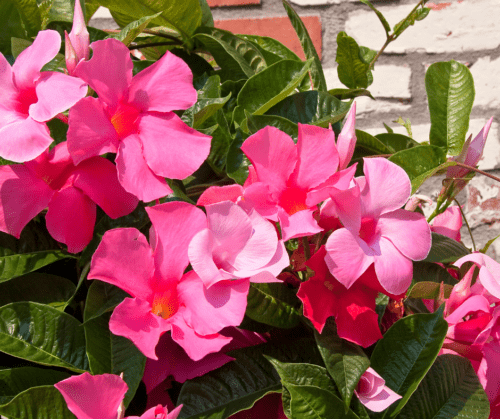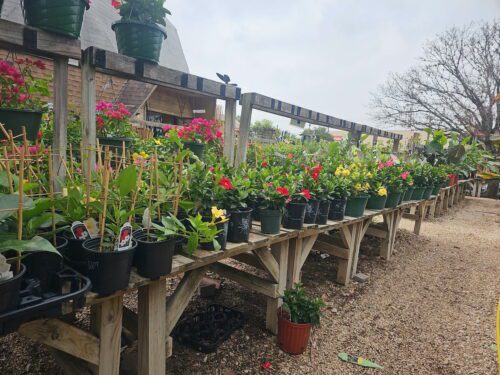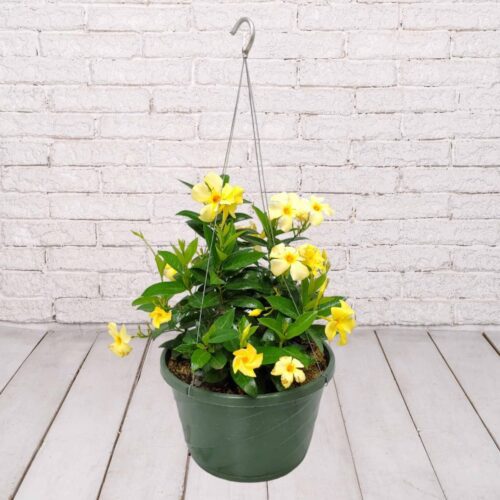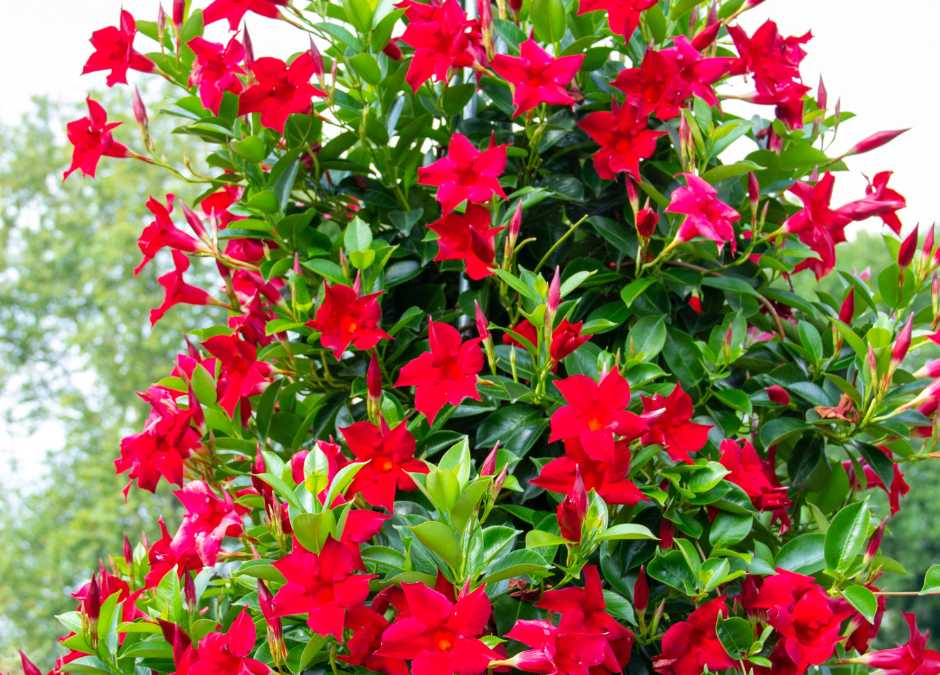Are you ready to add a splash of vibrant color to your garden? Look no further than Dipladenia, a stunning plant that thrives in the sunny landscape of San Antonio, Texas!
Most gardeners are more familiar with Mandevilla, a vining plant with tropical flowers that are usually pink or red. Dipladenia looks very similar at first, but on closer observation, you notice Dipladenia has smaller leaves and slightly smaller flowers, is more compact and bushier in size but still has a trailing effect. Both are stunners whether planted in your landscape or in containers. But today is all about Dipladenia. Let’s take a look.

Where to Grow Dipladenia: Ground or Pot?
A Visual Delight: Dipladenia is truly a feast for the eyes. With its lush, glossy leaves and striking blooms, this plant stands out in any garden, deck or porch. The flowers come in brilliant pinks, fiery reds, and sometimes you can find sunny yellows and cool white too. These blooms feature a beautiful trumpet shape that beckons hummingbirds and other pollinators. Their rich hues and alluring shapes make them irresistible to these tiny avian visitors, ensuring your garden is alive with movement and color.
Pot or Ground? When deciding whether to plant this gorgeous bloomer in a pot or directly in the ground, consider your space, aesthetic preferences, but most of all their cold tolerance. These tropical plants need to be protected through the winter, as they can only withstand temps down to about 45°F. Growing them in pots allows you to easily move your plant indoors when temps take a dive, and containers also offer a chance to showcase their beauty on patios or balconies. Plant them in hanging baskets and you get to enjoy their slight trailing effect.
However, when planted in the ground, they can grow to their full mature growth (12′ – 2′ T x 18″ – 3′ W ) without a pot restricting their roots. You would just need to make sure that when the cold comes you have your winter protection at the ready. Regardless of the method, these plants appreciate some support as they climb and spread, so consider using trellises or stakes if needed. (No support needed for hanging baskets because you would want them to trail down.

How to Grow Dipladenia
Sun, Heat, and Drought Resilience:
Dipladenia loves bright light! This plant is well-suited for the warm climates of San Antonio, thriving in full sun with a remarkable tolerance for heat and drought. While they enjoy basking in sunlight, they can tolerate some shade, especially during the hottest parts of the day.
Watering Needs: These beauties prefer to be kept on the drier side, so be sure not to overwater them. A good rule of thumb is to water when the top inch or two of soil is dry. This helps prevent root rot while keeping them healthy and happy. If planted in a container, make sure it has plenty of holes in the bottom to allow for drainage. And if you use a drip saucer under your pot, check for water and empty it about 20 minutes after watering.
Fertilizing: Dipladenias are usually available in the nursery already in bloom or just about to bloom. Choose a complete fertilizer with a bit of a higher middle number on the bag . A higher middle number on the fertilizer ratio means you are getting a little more phosphorus in your fertilizer which helps promote more blooms. Fertilize spring through summer, every two weeks with liquid fertilizer for containers, and monthly for inground plantings with a time release granular fertilizer. Stop fertilizing in fall and winter, you don’t want to push new growth that can be damaged by the cold.
Size Matters: At maturity, dipladenia typically reaches a height of about 2 to 4 feet and can spread 2 to 3 feet wide, making them a fantastic choice for adding fullness and interest to your garden. Again, if planted in containers their growth is restricted by the size of pot you choose, but you’ll need a 12″-15″ pot at least.

A Must-Have for Your Garden! If you’re looking to attract hummingbirds, add vibrant color, and enjoy low-maintenance beauty in your garden, dipladenia is the perfect choice. Their enchanting flowers and resilient nature make them an eye-catching addition to any home or apartment. Don’t miss out on the chance to bring this wonderful plant into your home!
~The Happy Gardener, Lisa Mulroy

